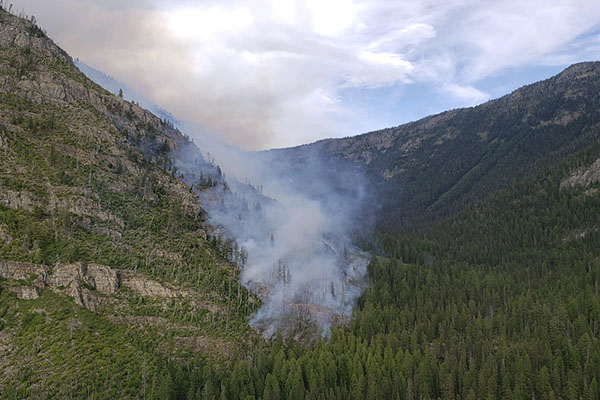Crews Quickly Attack New Wildfire in Swan Mountain Range
Firefighters aggressively battling 75-acre blaze in accordance with coronavirus-related policy aimed at avoiding use of large fire crews
By Beacon Staff
Firefighters from the Flathead National Forest are working to quickly contain a wildfire burning just outside the Bob Marshall Wilderness in a remote region of the Swan Mountains.
The Lion Creek Fire was reported by a Montana Department of Natural Resources and Conservation helicopter just before 11 a.m. on Tuesday, Aug. 11. It took ground crews three hours to hike into the fire area, which is just east of Salmon Prairie and a little more than 10 miles north of Holland Peak. Upon reaching the area, firefighters encountered steep, rugged terrain offering heavy fuels to the fire, which was initially measured at 75 acres. No cause has been determined.
Fire suppression efforts increased on Wednesday, with two additional hand crews, several advanced fallers and two helicopters now part of the effort. Firefighters are focused on the fire’s southern edge to preserve access to the Lion Creek Trail and allow backcountry users to exit the area. Efforts on Tuesday were enough to moderate the initial spread of the fire, although some nighttime burning is still expected. Lion Creek Trail (No. 25) is closed as part of the firefighting operation but no roads are impacted.
The fire is the largest of 16 starts so far this year on Flathead National Forest land, the agency wrote in a press release, and the blaze may linger because of its hard-to-reach location and the ruggedness of the terrain. Smoke from the fire may be visible in the Swan Valley but is likely headed east into the Bob Marshall Wilderness based on current weather patterns.
Forest Service officials are deploying aggressive initial attacks to fight fires this season in response to the COVID-19 pandemic. The object is to extinguish fires quickly thereby reducing the likelihood that densely populated fire camps will be needed.